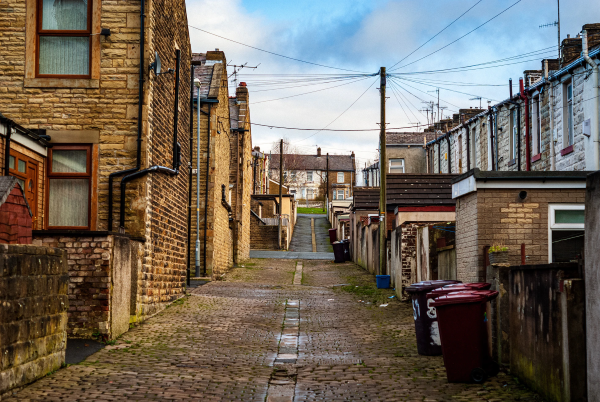 What is the difference between poverty and deprivation? How can they be measured and understood? How can data help policymakers find ways to reduce their effect on the lives of people in the UK, especially given the effects of the Covid-19 pandemic? In their previous post, Finn Dymond-Green examined measures for deprivation. In this post, they turn their attention to measuring poverty.
What is the difference between poverty and deprivation? How can they be measured and understood? How can data help policymakers find ways to reduce their effect on the lives of people in the UK, especially given the effects of the Covid-19 pandemic? In their previous post, Finn Dymond-Green examined measures for deprivation. In this post, they turn their attention to measuring poverty.
Measuring poverty
Deprivation as a concept has its limitations, both in terms of comparability over time and it only being a relative measure.
Poverty is another concept for understanding people’s situations.
The UN, in 1995, adopted two definitions for poverty.
Absolute poverty
a condition characterised by severe deprivation of basic human needs, including food, safe drinking water, sanitation facilities, health, shelter, education and information. It depends not only on income but also on access to services.
Overall poverty includes
lack of income and productive resources to ensure sustainable livelihoods; hunger and malnutrition; ill health; limited or lack of access to education and other basic services; increased morbidity and mortality from illness; homelessness and inadequate housing; unsafe environments and social discrimination and exclusion. It is also characterised by lack of participation in decision making and in civil, social and cultural life. It occurs in all countries: as mass poverty in many developing countries, pockets of poverty amid wealth in developed countries, loss of livelihoods as a result of economic recession, sudden poverty as a result of disaster or conflict, the poverty of low-wage workers, and the utter destitution of people who fall outside family support systems, social institutions and safety nets.
In addition, researchers use the term relative poverty:
Individuals receiving income a certain level (e.g. 50%) below the median income of the general population.
There is no official measure of poverty in the UK, although Households Below Average Income data measures “equivalised disposable income that falls below 60% of the national median.”
The Office for National Statistics produces analysis of persistent poverty, defined as “experiencing relative low income both in the current year and at least two out of the three preceding years.” The ONS analysis includes comparison with other countries.
Image: alley between terraced houses (Peter Hall on Unsplash)
There are moves to develop a fuller understanding of poverty in the UK, including the London Poverty Profile and the Social Metrics Commission.
London Poverty Profile
The Trust for London has developed the London Poverty Profile using “Official data from over 100 indicators, revealing patterns in poverty and inequality”. The London Poverty Profile is an attempt to better understand what poverty means for people in London in the areas of:
- living standards
- housing
- work, worklessness and benefits
- shared opportunities.
Much of the data used to compile the profile can be accessed from the UK Data Service: Annual Population Survey, Annual Survey of Hours and Earnings, Family Resources Survey, Households Below Average Income, Labour Force Survey, Wealth and Assets Survey, UK Census (data from 1971 through to 2011).
Headline findings include:
- Poverty rates in Inner London are 10 percentage points higher than in many parts of the North of England
- Households in poverty in London face housing costs that, on average, amount to 56% of their net income
- 67% of London adults in workless families are in poverty
The London Poverty Profile was only released early this year, so it may take some time before we can see the impact of this extensive analysis of poverty in the UK’s capital.
Social Metrics Commission
The Social Metrics Commission is an independent commission set up in 2016 to build a new consensus around poverty measurement.
In 2018 the Commission launched its new approach to measuring poverty. As well as looking at income, the new metric accounts for the positive impact of people’s liquid assets on alleviating immediate poverty but also the range of inescapable costs that reduce people’s spending power.
In addition to reporting on the number of families in poverty, the Commission’s approach also provides measures of the depth and persistence of poverty. The Commission’s measure includes a range of Lived Experience Indicators that capture issues such as
- mental and physical health
- employment
- isolation
- community engagement.
The commission’s measure draws on data from Understanding Society, Family Resources Survey (FRS), and Households Below Average Income (HBAI). The commission has just published its latest report: Measuring Poverty 2020.
In the spirit of transparency and reproducibility, and to encourage these measures to be built on, the Commission has released the code it used to produce the poverty indicators.
Since launching its new poverty metric, the Commission has received widespread support from commentators and politicians from across the political spectrum.
Most significantly, in May 2019 the Government announced it would be developing experimental measures of poverty based on the Commission’s approach.
Understanding poverty and developing policies
Poverty and deprivation are complex areas to explore and understand, but they are issues that shape the everyday lives of many people in the UK and, in the current pandemic conditions, may come to affect many more.
Consequently, it’s important that researchers and policymakers have the highest quality data to hand to support their understanding of the lived experiences of people in poverty as well as the underlying structural and personal issues.
The better quality the data and understanding of the issues, the better equipped policymakers will be to develop strategies for reducing the blight of poverty.
About the author
Finn Dymond-Green has been the Impact Manager for the UK Data Service since 2018 and is currently seconded to the role of Service Director for Data Impact.


Neil,
A very timely (for me and may be others too!) series of analyses of various measures of deprivation and poverty. Perchance, after following up leads to the UK Data Service, I had started reading Stuart Mills’s blogs on the philosophical underpinnings of data and had dropped in to catch-up on that series today and found this series of posts.
The discussions around deprivation and poverty in this and the preceding post have provided me with very significant food for thought as I move forward with my own research. Once I gather my thoughts, I might feel ready to add something to the debate. Well done and thank you. Ian